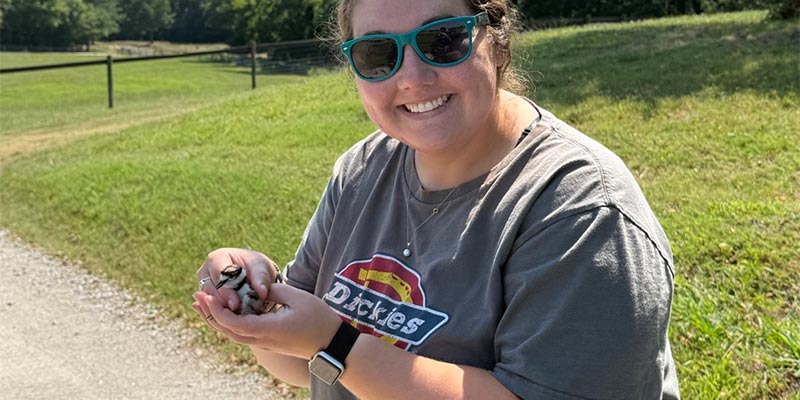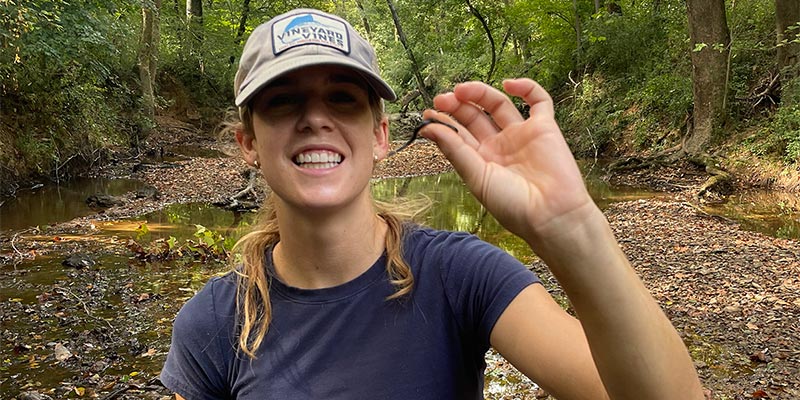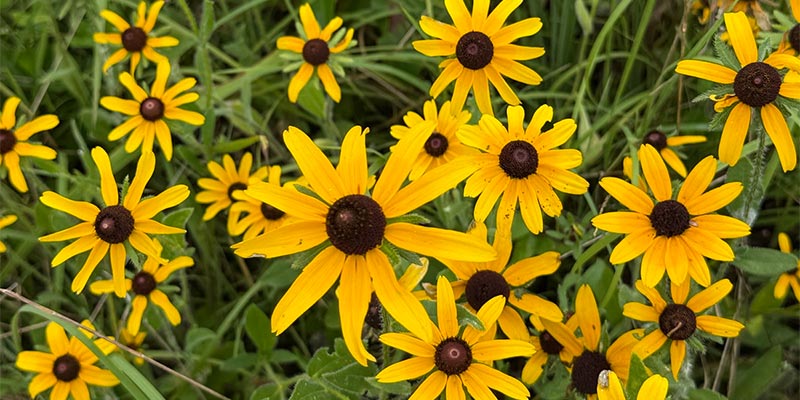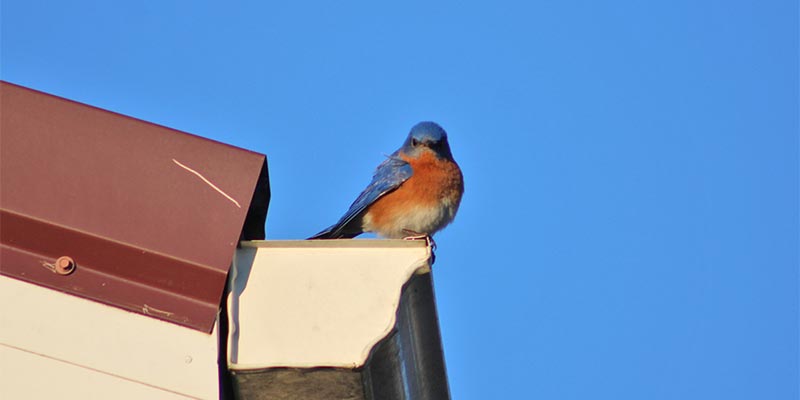June

Monthly Weather Review
Monthly Rainfall Total – 4.84 in
Highest Temperature - 95°F
Lowest Temperature - 72°F
Average Wind Speed – 7.0 mph
Tuesday June 3rd
- While making their morning rounds to check beetle traps, CWF staff paused to admire a spiderweb stretched like silver lace in the morning sun. The delicate threads shimmered in the light, almost magical—but sadly, too fine for a phone camera to capture. It was one of those quiet, fleeting natural wonders that is best appreciated in person.
Wednesday June 4th
- While checking bird boxes, staff heard the sharp, high-pitched bleats of an animal in distress. Following the sound led them to a tiny White-tailed Deer fawn (Odocoileus virginianus)—wobbly-legged and likely no more than a month old—calling out urgently for its mother. Moments like these remind us how fragile and wild this landscape truly
- That same morning, staff delighted in photographing newly hatched Tufted Titmouse (Baeolophus bicolor) chicks nestled deep in the safety of a nest box—pink, featherless, and just beginning their journey.
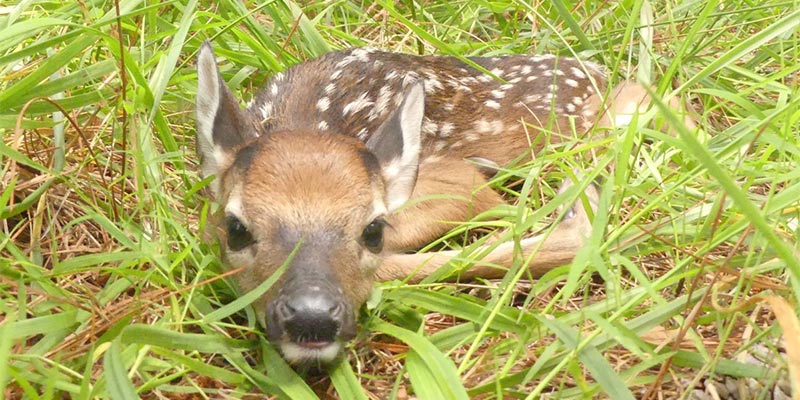
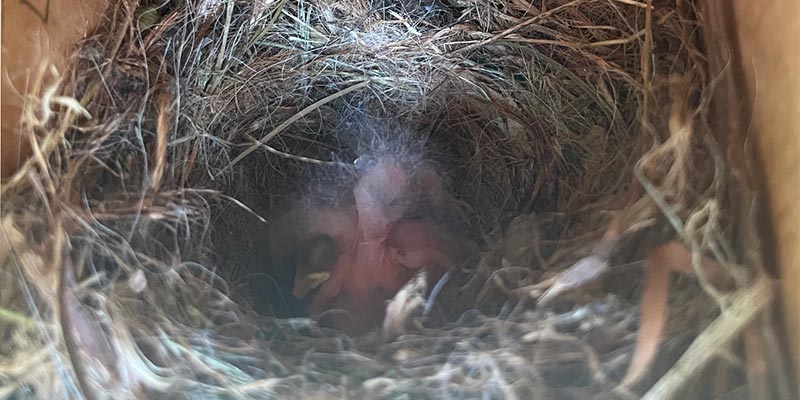
Thursday June 5th
- Right outside the office window, a pair of Eastern Phoebes (Sayornis phoebe) who had been nesting finally hatched their young. Staff watched as the fuzzy heads of the hatchlings bobbed up, mouths wide open, each time a parent returned with food—a heartwarming scene of new life in action.
- Later, CWF welcomed students and faculty from Francis Marion, Queens University, and Winthrop University for a collaborative Herpetology Study orientation. After a cheerful group photo, everyone headed out for a walking tour of the property’s diverse habitats. In the wetlands of Halfmoon, a keen-eyed student from Francis Marion spotted a snake, while one of the Queens professors gently scooped up a Southern Two-lined Salamander (Eurycea cirrigera), allowing students an up-close look at its vivid pattern and tiny toes.
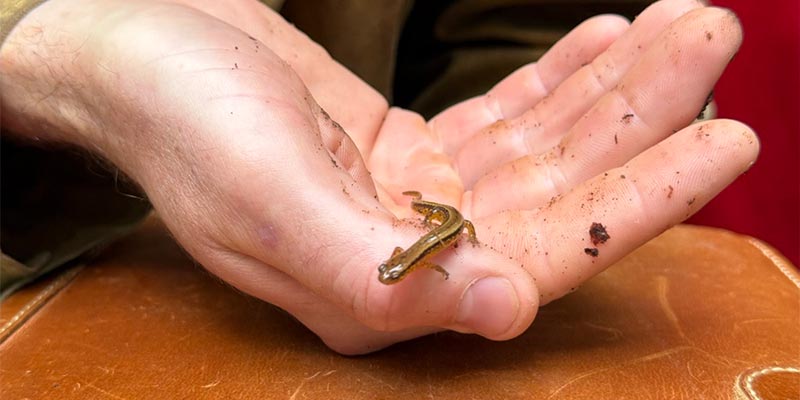
- Back at the Learning Center, the group got a surprise when another student fearlessly and skillfully caught a large Black Rat Snake (Pantherophis obsoletus) —turning the moment into an impromptu “show and tell” about reptiles.
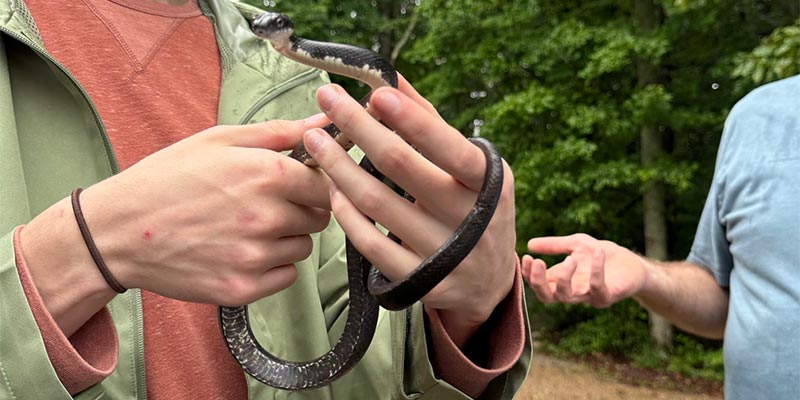
Tuesday June 10th
- As golden light faded into dusk, CWF staff gathered for the annual Nightjar Survey. A full moon casts a soft glow over the landscape, creating a calm, almost mystical setting.
- With the help of a parabolic microphone, the team was able to amplify and clearly hear the haunting calls of Whip-poor-wills (Antrostomus vociferus) and Chuck-will’s-widows (Antrostomus carolinensis) echoing through the night—an unforgettable audio experience under the stars.
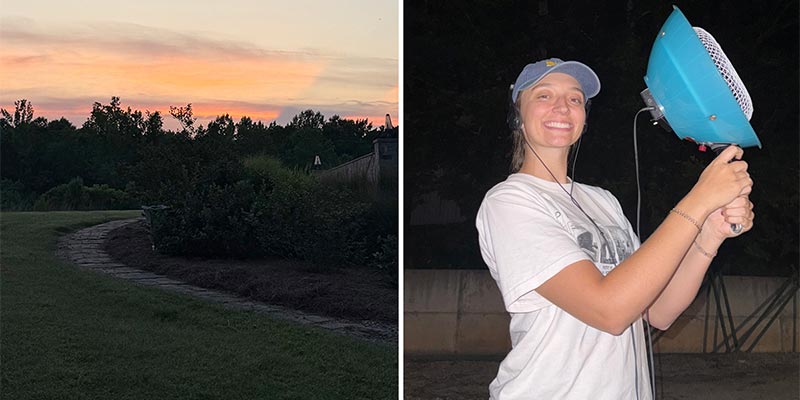
Thursday June 12th
- An Eastern Box Turtle (Terrapene carolina) was seen hustling across the trail before slipping into Talton Branch to cool off in the shallow, shaded water.
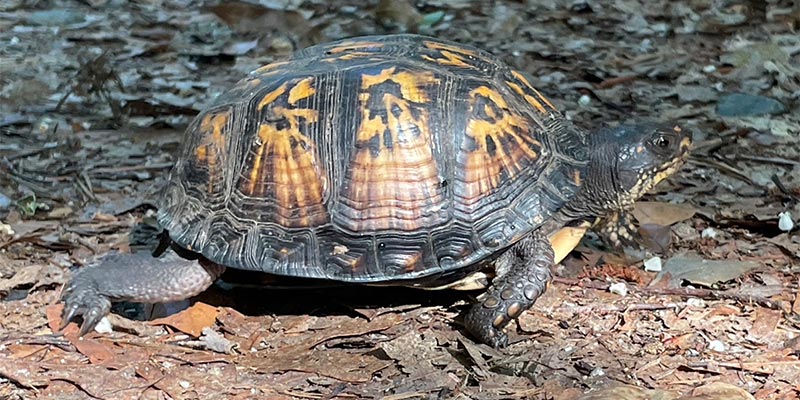
- Recent heavy rains had turned some trails into shallow creeks, forcing the team to take long detours to reach beetle traps and game cameras—nature’s reminder that it is always in charge.
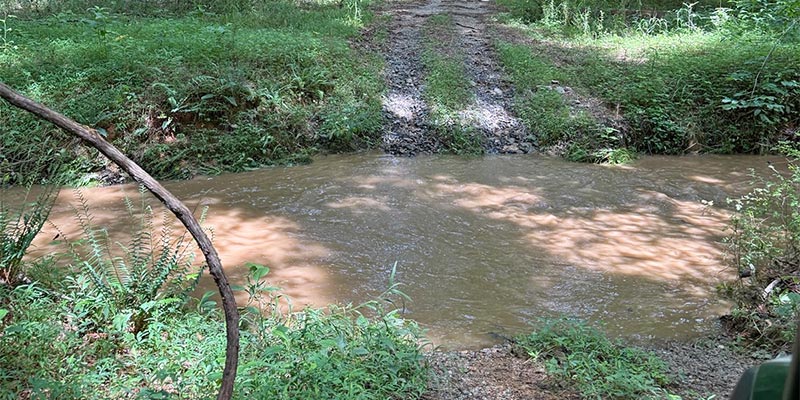
- During a bird box check, staff discovered two young Barn Owls (Tyto alba) nestled in the same old metal silo used last year. When approached, the owlets instantly spread their wings and began slowly swaying their heads side-to-side—a classic, eerie-looking defense behavior meant to make them seem bigger and more intimidating than they are.
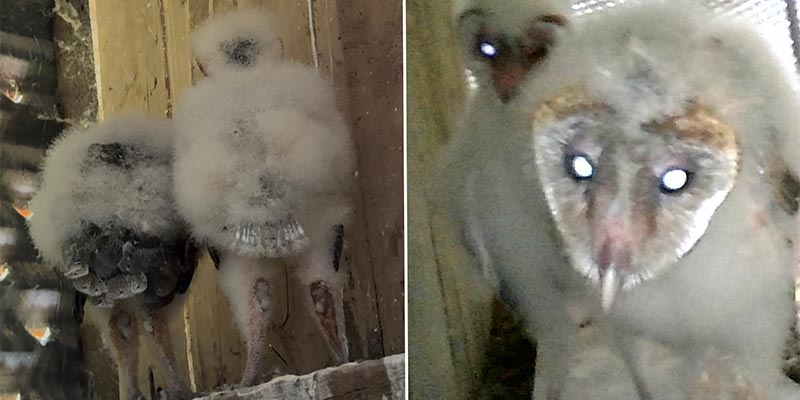
Thursday June 19th
- A brood of Eastern Bluebird (Sialia sialis) hatchlings was spotted on the brink of fledging—but this time their nest was not in a box. Instead, they had claimed a cozy hollow in one of the wooden fence posts by the horse paddocks. It was a reminder that sometimes, wildlife finds the perfect home in the most unexpected places.
Friday June 20th
- CWF was honored to host a weekend field immersion for a visiting SRESFS student group.
- Staff led the group on a hands-on nature walk, introducing them to ongoing research projects across the property—from native plant surveys to habitat restoration.
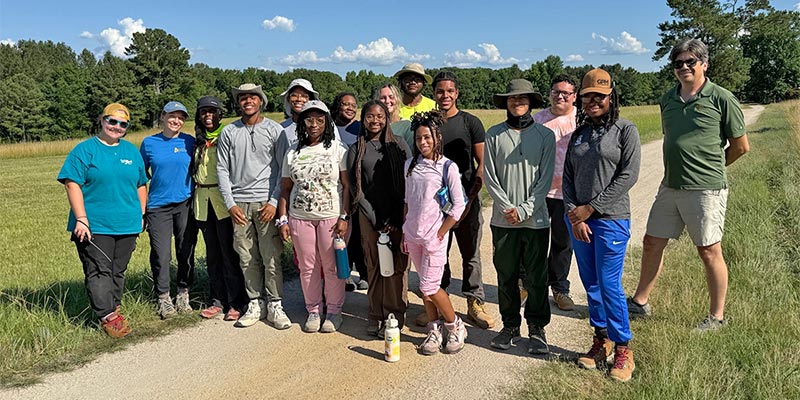
- SCDES’s Justin Lewandowski gave an engaging presentation on water quality testing and macroinvertebrate sampling. Students then got their feet wet—literally—as they waded into the creek to conduct their own surveys.
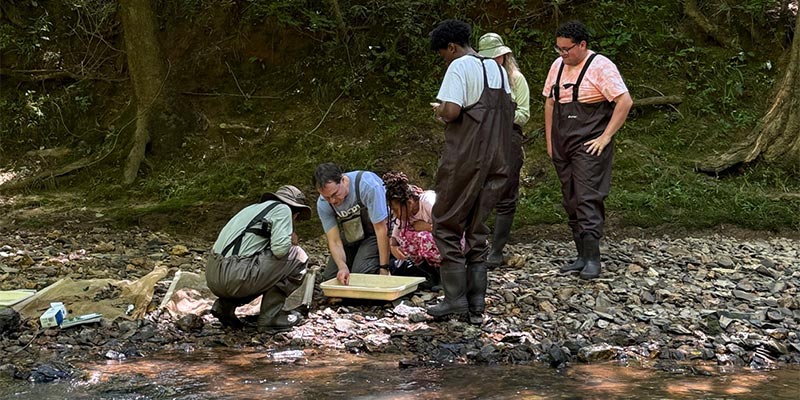
Tuesday June 24th
- It was Drone Day for the summer interns! CWF staff led a “Drone 101” crash course as interns learned to fly and film the landscape. The aerial footage they capture biweekly will help monitor the growth and progress of prairie restoration efforts—blending technology with boots-on-the-ground conservation.
Wednesday June 25th
- South Carolina DNR staff, former intern Clay Tiller, arrived to bait the ponds in preparation for upcoming Wood Duck (Aix sponsa) banding efforts. These early steps help support vital banding and monitoring programs later in the season.
Thursday June 26th
- CWF staff spotted a tiny Killdeer (Charadrius vociferus) chick wandering too close to the road, separated from its mother and in immediate danger. Thankfully, the team had been monitoring the nest for weeks and knew exactly where to reunite the little one with its family. A heartwarming and successful rescue to end the month!
